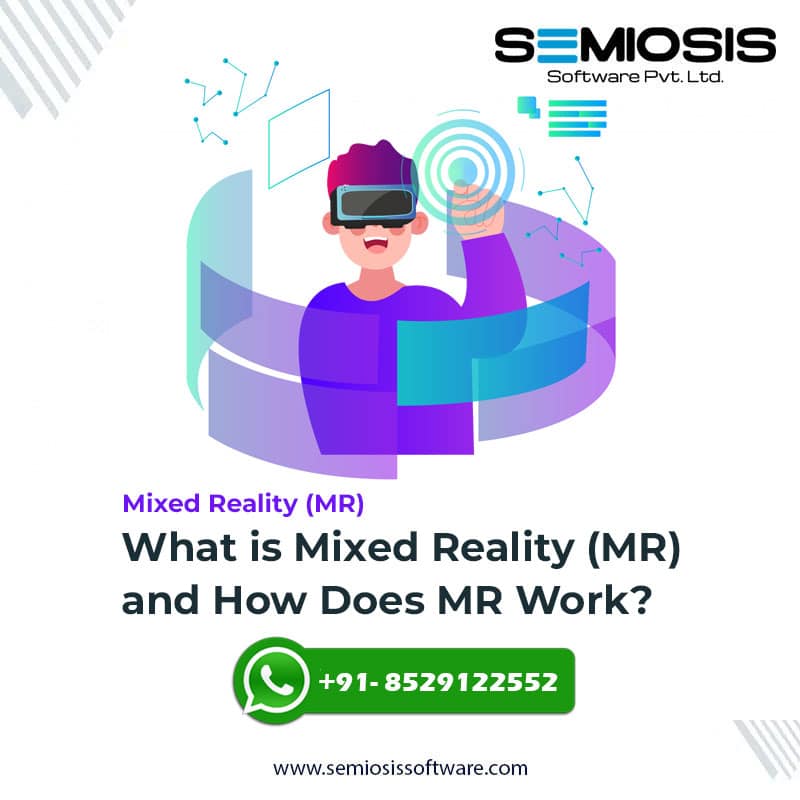Unveiling the Enigma of Mixed Reality (MR): A Dive into the Blurring Boundaries of the Virtual and the Real
In the ever-evolving landscape of technology, the boundaries between the physical and virtual worlds are becoming increasingly blurred. One of the fascinating realms pushing these boundaries is Mixed Reality (MR). This cutting-edge technology combines elements of both the physical and digital worlds, creating an immersive and interactive experience for users. In this blog, we will unravel the mysteries surrounding Mixed Reality, exploring what it is, its key components, and how it works.
Defining Mixed Reality (MR)
Mixed Reality (MR) is an emerging technology that merges the real and virtual worlds, allowing users to interact with both seamlessly. It encompasses a spectrum that spans from the purely physical reality at one end to the entirely virtual environment at the other, with Mixed Reality lying somewhere in between. Unlike Virtual Reality (VR), which immerses users entirely in a virtual environment, and Augmented Reality (AR), which overlays digital information onto the real world, MR integrates and interacts with the physical environment in a more sophisticated manner.
Key Components of Mixed Reality
To understand how Mixed Reality works, it’s crucial to grasp its fundamental components:
-
Real and Virtual Worlds Integration:
- MR systems blend real-world elements with digital content, allowing users to see and interact with both simultaneously.
- Physical objects in the user’s environment are tracked and recognized, enabling the seamless integration of virtual objects into the real world.
-
Sensors and Cameras:
- MR devices are equipped with an array of sensors and cameras that capture the user’s physical surroundings in real-time.
- These sensors track the user’s movements and the environment, providing data that is crucial for aligning virtual objects with the real world.
-
Spatial Mapping:
- Spatial mapping technology creates a digital representation of the physical space around the user.
- This enables the MR device to understand the dimensions, surfaces, and obstacles in the real-world environment, ensuring accurate placement of virtual objects.
-
Gesture and Voice Recognition:
- MR often involves intuitive interfaces such as gesture and voice recognition.
- Users can interact with virtual elements by using hand gestures or vocal commands, enhancing the overall immersive experience.
How Mixed Reality Works?
Understanding the mechanics behind Mixed Reality involves delving into the intricate interplay of hardware and software. Here’s a simplified breakdown of the process:
-
Environment Scanning:
- The MR device scans the user’s physical environment using an array of sensors and cameras.
- This process, known as environment mapping, creates a 3D model of the surroundings, including surfaces, objects, and spatial features.
-
Object Recognition:
- Real-world objects are identified and tracked through computer vision algorithms.
- This allows the MR system to understand the position and orientation of physical objects, facilitating the integration of virtual elements into the user’s environment.
-
Spatial Alignment:
- Spatial mapping and object recognition data are used to align virtual content with the real-world environment.
- This ensures that virtual objects appear anchored to and interact seamlessly with the user’s surroundings.
-
Interaction and User Interface:
- MR interfaces often incorporate natural interaction methods, such as gestures and voice commands.
- Users can manipulate virtual objects, navigate through digital content, and interact with the MR environment using these intuitive interfaces.
-
Real-Time Rendering:
- The MR device continuously updates the virtual elements in real-time, adjusting their position and appearance based on the user’s movements and changes in the physical environment.
Applications of Mixed Reality
The versatility of Mixed Reality extends its applications across various industries:
-
Gaming and Entertainment:
- MR enhances gaming experiences by bringing virtual characters and environments into the real world.
-
Education and Training:
- In educational settings, MR can provide immersive learning experiences, allowing students to interact with historical events, explore scientific concepts, and more.
-
Healthcare:
- MR is used in medical training, surgery planning, and patient education, offering realistic simulations and visualizations.
-
Architecture and Design:
- Architects and designers can use MR to visualize and manipulate 3D models in real-time, facilitating collaborative design processes.
-
Remote Collaboration:
- MR enables remote teams to collaborate in a shared virtual space, breaking down geographical barriers.
Conclusion
Mixed Reality is a testament to the relentless pursuit of creating more immersive and interactive digital experiences. As technology advances, the boundaries between the physical and virtual worlds continue to blur, opening up new possibilities for innovation. Whether it’s in gaming, education, healthcare, or design, the impact of Mixed Reality is reshaping how we perceive and interact with our surroundings. As we delve deeper into this exciting realm, the future promises even more mind-bending and transformative experiences at the intersection of the real and the virtual.






